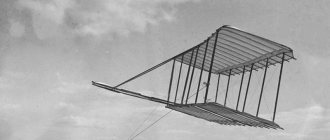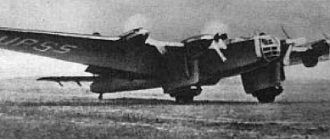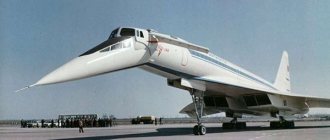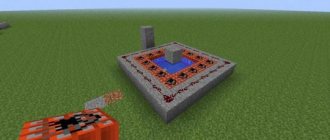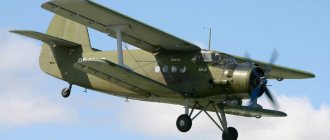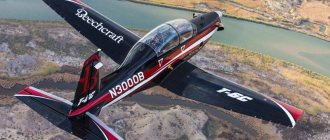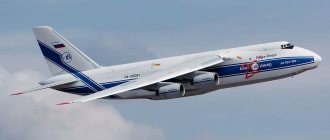The most unusual aircraft of the Luftwaffe Blom and Voss BV-141
This aircraft, not without reason, claims to be the most unusual aircraft ever taken into the air. The development of the project under the designation Ha-141 began at (the aviation department of the Blom und Voss shipbuilding concern) under the leadership of R. Vogt. The vehicle was created in response to the requirements of the Reich Ministry of Aviation for a new short-range reconnaissance aircraft.
The Ha-141 was an asymmetrical monoplane: the crew nacelle was shifted to the left of the longitudinal axis of the aircraft, and the engine nacelle, which turned into the tail boom, was shifted to the right. The 9-cylinder air-cooled BMW 132 engine (960 hp) was chosen as the power plant. When considering preliminary designs in the Technical Department, the proposal was immediately rejected due to the overly unusual layout. Nevertheless, the company continued to work on its own initiative. On February 25, 1938, the Ha-141-0 prototype took off for the first time. Contrary to the opinion of skeptics who believed that such a strange aircraft would simply be uncontrollable, the Ha-141-0 remained quite confident in the air. As a result, the company received a contract for three prototype aircraft. The Ha-141-0 was accepted by the military and designated BV-141V2. And the first official prototype was the second copy, designated Blohm und Voss BV-141V1. It entered testing in September 1938 and featured a significantly redesigned crew nacelle with an increased glass area.
On the BV-141V3, the wingspan was slightly increased, the fuselage was lengthened, and weapons were also installed. The aircraft was not introduced into full-scale mass production - only 10 pre-production aircraft were built until mid-1943.
Main modifications
BV -141 A -0 - BMW 132N engine (865 hp). Small arms - 4 7.92 mm machine guns (2 fixed MG 17 firing forward, 2 movable MG 15 on the top and tail mounts); it is possible to carry 200 kg bombs (4 50 kg bombs). Crew - 3 people. 5 units produced.
BV -141 V -0 - BMW 801A-0 engine (1560 hp). The horizontal tail has been changed - it has become asymmetrical, with only one left console. The armament and crew composition are similar to the BV-141A. 5 aircraft were produced, the first of which was ready in January 1941, and the last in May 1943.
nyk B NYAMNBMNL ME MrYUBHKYA MENASHVMSHI BMEMKHI BHD bV.141, MN, RYU YUY RPEANBUKNYAE "MNpLYUKEMNE" REUMHVEYAYNE NANYAMNBYUMKHE DK NRYKNMEMKH YAYULNKERYU, YANYAKYUK KHYAE MU RN, VRN bV.141a-0, YYNASH, KHLEK MEDNYARYURNVMSCH RTSNBNNpSFEMMNYARE. TNTsR SFE OREDONKYUTSIUK, VRN ONRPEASERYA ANKEE LYNYU YAHKNBYU SYARYUMNBYU, KH B MUVYUKE OMBUYUR 1939TS. YARYUK ORNEIRHRNBUREYA BYURKHYUMR OND ANKEE LNYMSHI blW-801. YNMYARpSYZHKH YYULNKERYU ASHKYU ONKMNYARECH OEPERYUANRYUMYU, LUYER MNBNTsN bV-141bASHK KHMYAOEIRHRNBYUM YNLHYAYAHEY pkl 14 TEBRYUK 1940TS. LEMAYE VEL VEREG TsND, 9 ЪМБИР 1941Ц. OepBSHI XG ORRKH OREDYAEPHIMSHU bV.141b-0 (V9) Nya+OZ YANBERPKHK YABNI OepBSHI ONKER. UNRЪ "aKNL SMD TNYAYA" ONKSVKHKYU YNMRpYuYR RNKEIN MU ORRE bV.141b-0, pkl OKYUMKHRNBYUKN GYUYUGURE EY ORRE OREDYAERHIMSHU X 10 YAERHIMSHU bV.141b-1.
BYAYNPE BSHYAMHKNYAE, VRN bV.141b HLEK SOpYUBKELNYARE USFE, VELED WITH YABNETSN OREDYARBEMMHJU. YARYURKHVEYAYKHE HYAOSHRYUMKH B MNYARE 1940TS. BSHЪBHKH MENAUNDHLNYARE SYAHKEMKH MEINRNpSHU SGKNB. ONRPEANBUKYUYAE OEPEDEKYU NOEPEMKH, YUYAYAH KH YAKHYARELSH SOPYUBKEMKH. YARYURKHVEYAYKHE HYAOSHRYUMKH ONYUGYUKH, VRN OrNAKELSH I TSKHDpYUBKKHYNI NYARYUKHYAE, BSHUBKHKHYAE KH MEDNYURYUKH I LEUUMKHGLNL BSHOSYAYU YUYAYAH. GYUREL, BN BREL OrNTsNMNB DBKHTSUREK, OrNAKELSH BNGMHYKH X I BMW-801. yN BRELEMH MYUVYUKYU KERMSHU HYAOSHRYUMKHI YARYURHVEYAYHE BYE EYE ORNDNKFYUKHYAE, H, YUY YAKEDYARBHE, LUYYAHLYUKEMYYAYNpNYARE bV.141-V9 ASHKYU NTspYUMHVEMYU 450YL/V. rpHLLEp SHKERNMNB NYUGYUKYA MESHTTTEIRKHBMSHL, YU YAYULH SHKERNMSH KGKKHME VSBYARBKHREKEMSHLH. orNDNKFYUKKHYAE MEORKHRMNYARKH I TSKHDYUBKKHYNI, ORYURHVEYAYKH B REVEMKHE BYAYEI OrNTspYULLSH HYAOSHRYUMKHI.
GYUBERYEMKHE NYARYUBKHYA VERSHPEU bV.141b-0 GYUDERFKHBYUKNYAE HG-GYU NFKHDUMHYUGREYEMKH ORNAKEL c bV.141-V9. ON YAPYUBMEMHCH I bV.141a, b-YAERHЪ NRKHVYUKYUYAE SBEKHVEMMSHLH pYUGLEpYULH, HGLEMHKYUYAE H TNpLYU YPSHKYU. BLEYARN NBYUKEMNTSN YAEVEMKH TCHGEKЪF YARYUK YpSTTSKSHL ON BYAEI DKHME, YU NOEPEMKHE ASHKN ONKMNYARECH OEPEORNEIRHRNBUMN. HYU bV.141-V2 ASHKN HYAOSHRYUMN EYE NDMN MNBNBBEDEMKHE - MEYAHLLERpHVMSHI YARYUAHKHKYURNp. vRNASH SKSVHRE ONKE NAYARREKYU YARREKYU, ORYUBYU VYUYARE YARYUAHKHKHYURNpYU ASHKYU YAMRYU, YU KEBYU OKNYAYNARE ASHKYU SBEKHVEMYU, H, RYU YU HYAOSHRYUMKH ONYUGYUKH NRYASRYAR BHE HGLEMEMKHI I SOpYUBKELNYARECH, RÜYNE NOEPEMKHE ASHKN ORKHLEMEMN MU bV.141b.
bV.141-V9 ONYARSOKHK B HYAOSHRYUREKEMSHI ZHEMRp B PEUKHME B LYUE 1941TS. 1 KHCHM Y MELS ORKHYANEDKHMKYA V10 (Nya+Ryu), YNRNpSHI RpKH LEYAZHU OSHKHKYA B NFKHDYUMKHH ONYARYUBYKH BKHMRYU. nTHZHHYUKEMSCH ORNTspYULLS HYAOSHRYUMKHI ONYARNMMN YANORNBNFDYUKH pYUGKHVMSHE LEKYHE MEORKHRMNYARH. YNTSDU VERBEPSHI bV.141b - V12 (Nya+RF) ONYARSOKHK B rpYUBELCHMDE DK HYAOSHRYUMKH BNNpSFEMKH, BSHYAMKHKNYAE, VRN ORH YARREKEAE YUAHMYU GUONKMKYUYAE ONpNUNBSHL X TSYUGYULH. REL BRELEMEL Y HYAOSHRYUMKHL ORKHYARSOKHK V11 (Nya+Rya), MN LEKYKHE DETEIRSH YAKEDNBUKH NDHM GYU DpSTSKHL, KH MESDHBHREKEMN, VRN ORSHI KH ONYAKEDMKHI bV.141b-V13 (Nya+RH) ASHK Ts NRNB RNKAIN Y 15 LYU 1943TS.
NYAEMECH 1941TS. BRNpNI V10 ASHK ONYARYUBKEM B SVEAMN-pYUGBEDSHBYUREKEMSC VYUYARE B TspNYAYAEMUIME, BY YYYYANMXX DK BNIYAYNBSHU HYAOSHRYUMKHI. BAYNPE ONYAKE SCHRNTSN LHKEU pYuYaONpDHKYA, VRNASH MU AYUGE YASYEYARBSCHYKHU bV.141 YATNpLKHpNBUKH UNR ASH NDMS ANEBSC SCHYAYYUDrHKECH DK DEYARBKHI MU bNYARNVMNL T pHMRE.
ShchRKH OKYUMSH YANGDIUMKH YAOEZHHYUKEMNI SCHAYYUDpHKEKH bV.141 ASHKH NYNMVUREKEMN NRAPNEMSH BEYAMNI 1942TS.
TSEMERUKEMSHL RYUANL. y SHRNLS BLELEMH BSHYAMHKNYAE, VRN GYUDYUVH pYUGBEDYKH I SIAOEUNL REYUKKHAE MUDEFMSHL DBSULNRRNpMSHL “tNYYE-bSKETNL” Fw.189. HYU SHRN p'emkhe AEGSYAKNBMN ONBKKHKKH LMNTsNVHYAKEMMSHE LEKYKHE DETEIRSH bV.141. yrNLE RNCN, ONYAKE ONBREFDEMKH GYUBNDNB "tNYYE-bsKETYU" MU "aKNL SMD TNYAYA" ASHKN OEPEBEDEMN ORNKHGBNDYARBN Fw.200 "yNMDNp", YNRNpSHI GYUMK 80% LNYNYAREI. b pREGSKERYURE OKYUMSH pkl MU ORNHGBNDYARBN EYE 15 LYUHM ME ASHKH pEYUKHGNBYUMSH, YU BSHOSYEMMSHE bV.141 RYU X ME ORKHMYKH SVYUYARKH B ANYU. cru:
| lNDHTHYUZHH | bV.141b-02 |
| pYUGLUU YPSHKYU, L | 17.42 |
| dKKhMYu, L | 13.95 |
| bSHYANRYU, L | 3.60 |
| OKNYYUDE YPSHKYU, L2 | 51.00 |
| I love it, JC | |
| OSYARNTSN YYULNKERYU | 4700 |
| MNPLYUKEMYU BGKERMYU | 5700 |
| RHO DBKHTSUREK | 1 od BMW-801a-0 |
| lnymnyare, K.Ya. | 1 U 1560 |
| LYUYAKHLYUKEMYYAINPNYARE, YL/V | |
| WITH GELKH | 366 |
| MU BSHIANRE | 435 |
| yPEIYEPYAYU YAYNPNYARE , YL/V | |
| oPUYRHVEYAYU DUKEMNYARE, YL | 1888 |
| LYUYAKHLYUKEMYYAINNONDZELMNYARE, L/LHM | |
| oPUYIRKHVEYAYKHI ONRNNKNY, L | 10000 |
| ShYKHOYUF, VEK | 3 |
| bNNPSPHEMHE: | DBYU MEONDBHFMSHU 7.9-LL OSKELERYU lG-17 BOEPED X DBYU 7.9-LL OSKELERYU lG-15 MU ONDBHFMSHU SYARYUMNBYUU MYUGYUD; 4U 50-YTS ANLASH |
| bottom. KhMTNPLYUZHKH: |
| vEPREF «Blohm und Voss bV.141 « | BV.141B-0 |
| BV.141B-0 | |
| BV.141B-0 | |
| BV.141B-0 | |
| BV.141B-0 | |
| BV.141B-0 | |
| BV.141B-0 | |
| BV.141B-0 | |
| BV.141B-0 | |
| BV.141B-0 | |
| BV.141B-0 | |
| BV.141B-0 | |
| BV.141B-0 | |
| YAZELYU YHMNYYULEPNI MU BV.141B-0 | |
| JYUAHMYU BV.141B-0 |
IWELSH:
| BV.141B-0 |
bYUPHYUMRSH NYPYYAYH:
| BV.141B-0 |
| BV.141B-1 |
| YaOHYANY HYARNVMKHYNB: |
| sХКЭЛ ЦПХМ. yPSHKE KCHTRBYUTTE (ANEBSHE YAYULNKERSH RPEREETSN PEIYU) Barbarossa's Hangar Aerojournal 25. Jean-Claude Mermet. Le Blohm und Voss 141: Un mouton a cinq pattes Aeroplane 2007-07. German Oddity. Beyond Unconventional Klassiker der Luftfahrt 2004-04. Gert Heumann. Schrager Vogel Le Fana de l'Aviation 2005-07. Karlheinz Kens. Blohm und Voss 141: Ou placer un mot eur genant? L+K 1992-11. Vaclav Nemecek. Blohm u. Voss BV 141B Waffen-Arsenal. M. Griehl, J. Dressel. Deutsche Nahaufklarer 1930-1945 Horst Lommel. Vom Hohenaufklarer bis zum Raumgleiter Flugzeug Classic 2008-02. Karlheinz Kens. Die asymmetrische Blohm & Voss Ha 141 |
sTSNKNY MEAYU. 2016
Combat use of the Blom and Voss BV-141 aircraft
BV-141 in flight
The fate of the BV-141 was a series of ups and downs, as interest in the aircraft waxed and waned. In the fall of 1941, one of the BV-141Bs was transferred for trial operation to the training and reconnaissance unit in Grossenheim. At that time, the possibility of forming a special detachment armed with these aircraft for testing on the Eastern Front was considered. But the plan was never implemented. BV-141 aircraft were concentrated at the air gunner school (Fliegerschutzenschule 1) in Ramel-Zargosch, where they were used as training aircraft.
The BF-141 aircraft showed quite good flight and operational qualities, but its unusual appearance played a disservice, causing wariness of the aircraft both among officials of the Reich Ministry of Aviation and among pilots. As a result, the production of BV-141 was limited to a small batch, and their use was limited to training purposes.
Blohm und Voss "BV-238/250", Flying boat
BV.238 /BV.250
In the spring of 1940, the RLM Technical Department proposed that Blom und Voss consider the possibility of creating an ersatz BV.138, designed to solve transport problems and conduct long-range maritime reconnaissance. It was supposed to replace the BV.138, which had just entered service with the Luftwaffe. Vogt's designers, together with Hermann Pullman from Junkers, who joined them, put forward eight designs for flying boats of various sizes that met the requirements of the RLM. Meanwhile, the technical department has raised the bar on requirements. The contours of the underwater part of the flying boat's hull have remained unchanged for 20 years, and the length-to-width ratio (L/B) was traditionally taken to be 6. As a result of tests in the pool, the DSF VV.222 received contours with L/B = 8.4, which was a big step forward and should have reduced the air and hydrodynamic resistance of the boat’s hull and increased its seaworthiness. There were some doubts regarding behavior on the water, especially regarding longitudinal and directional stability with elongated contours. The very first tests in September 1940 resolved all doubts regarding the elongated hull of the boat, and DSF tests showed that L/B could be even further increased. In November 1940, Blom und Voss was asked to begin work on a new project for four Jumo-223 engines with a total power of 10,000 hp. The engine was a 24-cylinder box of four Jumo-205 diesel engines. A single gearbox ensured the operation of four crankshafts per propeller. The preliminary design, proposed in mid-February 1941, provided for a flying boat with a wingspan of 53 m and a fuselage length of 39.7 m. The normal take-off weight was estimated at 56 tons, and the maximum at 74.5 tons. The wing load was 300 kg/sq.m and 400 kg/sq.m, respectively, with a wing area of 180 sq.m. L/B was equal to 10.
It is interesting to compare these figures with the Martin HRV-2M-1 Model-170 Mars flying boat, created in Baltimore. The American aircraft had a L/B of 6.3, a wing area of 331 sq.m with a span of 61 m and a load of 190 kg/sq.m with a weight of 65.3 tons. The armament was planned to consist of 12 20mm MG-151 cannons, mainly in remote-controlled turrets . The maximum speed was estimated at 342 km/h at water and 396 km/h at an altitude of 6000 m. The maximum range was 4800 km at a speed of 378 km/h and normal weight and 9300 km at a speed of 323 km/h and at maximum take-off weight. Blom und Voss was asked to begin a detailed study of the project, to which RLM assigned the designation BV.238. By July 1941, it became clear that the Jumo-223 would never be born, and due to the lack of engines of such power, the company’s designers had no choice but to urgently rework the project for six engines. These changes required an increase in size. The wingspan became 57.8 m, and the area was 336 sq.m. The length of the aircraft increased to 45.5 m. To this was added the requirement to use the BV.238 as a bomber. In the fall of 1941, the company received an order for four prototype aircraft, including three A-series with liquid-cooled DB-603 engines and one B-series with star-shaped BMW-801. Weser Flugzeugbau was involved in the work. Some components were designed by the French company Louis Breguet and the Czechoslovakian Flygtehnisch Fertigungsgemeinschaft Prague, which received an order for the production of a wooden flying model of a boat on a scale of 1:3.75.
The VV.238 had a tubular spar running along 30% of the wing chord. The entire rear edge of the center section was occupied by flaps. Access holes were made in the leading edge of the spar to allow access to the engines in flight. The hull of an all-metal structure with casing made of a corrosion-resistant alloy had opening hatch doors in the bow, which allowed unloading and loading directly to the lower deck. The front step with a very small ledge was supplemented by eight small steps. The control system was the same as on the VV.222 - partly manual, partly using servo drives. Until the end of 1941, Blom und Voss offered the Technical Department the so-called land version of the BV.238, which differed only in the replacement of the redan with a bomb bay and the installation of a landing gear trolley, plus a twin nose wheel and two supporting wing struts. The land version was to be used as a heavy transport aircraft capable of carrying 40 tons of cargo over 2,000 km, and as a bomber delivering 20 tons of bombs over 7,000 km and 4 tons over 10,000 km. As a long-range reconnaissance aircraft, the aircraft was capable of reconnaissance over much of the US Atlantic coast. At the beginning of 1942, this project received the designation BV.250. Four experimental aircraft were assembled in parallel with four naval ones. Apart from removing the redan, installing the landing gear and bomb bay, they were no different from a flying boat, including the composition of the weapons.
Defensive armament consisted of a front upper turret; two side turrets with shooter positions below them; two side turrets behind the wings with sighting positions above the installations and a rear turret. In April 1942, it was decided to replace the side turrets with a pair of MG-131 machine guns or one MG-151 cannon, and a year later it was decided to remove the two remaining turrets. Now the armament of the BV.238 was planned from the HD-151z bow turret with a pair of 20mm MG-151 cannons with 2800 rounds, two (bow and tail) NL-131f turrets with four MG-131 machine guns and 7200 rounds, a pair of MG-131 with 500 rounds cartridges on the barrel in side installations and a pair of four-machine-gun turrets NL-131f with 3600 cartridges at the ends of the center section. The wing towers required the installation of an additional section between the center section and the console, distributing the load from the tower to the main spar. As a result, the wing span increased to 60.2 m and the area to 349 sq.m. Since the spars of the first three aircraft were already completed, they decided to use a new spar with a reinforced section for the turret, starting with the first B-series aircraft - BV.238-V4, on which it was planned to be the first to install defensive weapons. Removing the tail cone with a remotely controlled turret and replacing it with the HL-131f reduced the hull length from 45.5 to 43.4 m.
Meanwhile, work continued on a wooden analogue of the FGP.227. His readiness was delayed, and he never had an impact on the work on VV.238. The analogue was equipped with six two-stroke air-cooled engines ILO-F-12/400 with a power of 21 hp. Empty weight was 1250 kg, takeoff weight was 1640 kg. The crew consisted of two people. Dimensions: span – 15.3 m; length – 12 m; wing area – 23.5 sq.m. FGP.227 (ВQ+UZ) was completed in early 1944 and had an auxiliary landing gear of 10 small wheels with low-pressure tires, which were intended for factory flight tests from a grass airfield. Since the plane resolutely refused to take off, it was dismantled and loaded onto a train for transport to Travemünde. The car was damaged due to the fact that the French prisoners of war who were loading it decided that it was some kind of secret weapon and dropped the wing of the aircraft from a height of 5 m. Repairs dragged on until September 1944, when the FGP.227 completed my first flight to Travemünde. Immediately after takeoff, all six engines stopped at once due to lack of fuel. As a result of the forced landing, the plane was again damaged. After another recovery, he made several flights to Travemünde and was found there by the Allies after the end of the war. It was sent for research to Filextowe, where it was later scrapped. BV.238-V1 (RO+EZ) was completed at the beginning of 1944 and began flying in April. The plane had no weapons, was equipped with six DB-603A engines with a power of 1750 hp, and although it was inferior in size to the largest aircraft in the world at that time - the Tupolev ANT-20, it was still the heaviest in the world. Its flight weight reached 80 tons. Using four launch boosters with a thrust of 1500 kg, the take-off weight reached 90 tons. The empty weight was 50,800 kg, the maximum fuel capacity was 49,000 liters. The crew consisted of up to 10 people.
V1 was still undergoing testing when it was sunk at anchorage by a P-51 Mustang. By this time, the second prototype VV.238-V2 was almost completed, and the assembly of V3 had already gone quite far. Both aircraft were to receive the DB-603D with a take-off power of 1900 hp. The V4 and V5, planned as prototypes of the B- and A-series, were ready for assembly, as were the four prototypes of the BV.250. But at the end of the summer of 1944, the entire program was terminated, and the half-finished aircraft were scrapped.
| Modification | ВV.238V-1 |
| Wingspan, m | 60.20 |
| Length, m | 43.40 |
| Height, m | 12.80 |
| Wing area, m2 | 349.00 |
| Weight, kg | |
| empty plane | 54800 |
| normal takeoff | 90100 |
| maximum takeoff | 100000 |
| engine's type | 6 DD Daimler-Benz DB-603D |
| Power, hp | |
| takeoff | 6 x 1900 |
| on high | 6 x 1560 |
| Maximum speed, km/h | |
| near the ground | 345 |
| on high | 422 |
| Cruising speed, km/h | |
| near the ground | 320 |
| on high | 356 |
| Practical range, km | 7800 |
| Crew, people | 7 |
| Weapons: | four 13-mm MG-131 machine guns with 1800 rounds per barrel in the bow and stern turrets, 2x2 MG-131 machine guns with 500 rounds in the side windows, 4 of the same machine guns in the underwing turrets with 900 rounds per barrel and two 20mm MG- cannons 151 with 2800 rounds in the front upper turret; under the wing it was possible to hang 20x 250kg SC-250 bombs, or 4x 1200kg torpedoes, 4x 1000kg bombs, 4x Hs-393 missiles or 2x 1000kg BV-143 glide bombs. |
Blom and Voss BV250 – land modification of the seaplane BV238
The BV 250 was a wide-body transport aircraft, long-range bomber and long-range reconnaissance aircraft. Long before the first flight of the BV238 seaplane, the Blom & Voss design bureau was developing a land version of the BV238. As a basis, the preliminary designs of the BV P 161 machine were taken, which was converted into the BV 250 machine. According to its design and layout, the multi-purpose aircraft BV 250 was supposed to carry a cargo weighing over 45 tons with a flight range of 2500 km. If it was used as a bomber with with a range of more than 7,000 km, the bomb load was 20 tons. The strategic bomber version with a bomb load of 4,000 kg had a range of 10,000 km, while the long-range reconnaissance aircraft had a range of 15,000 km. All overall dimensions and design - right down to the landing surface - were copied from the BV 238. The redan was replaced by a retractable chassis with twelve wheels assembled into four bogies in a tandem arrangement. Lateral stability during takeoff was achieved by using two support wheels, which replaced the seaplane's support floats, located on the wing consoles. The construction of the BV 250 was never carried out due to the martial law in Germany.
| Modification | BV.250 |
| Wingspan, m | 60.20 |
| Length, m | 43.40 |
| Height, m | 12.80 |
| Wing area, m2 | 349.00 |
| Weight, kg | |
| empty plane | 54500 |
| normal takeoff | 90000 |
| maximum takeoff | 95000 |
| engine's type | 6 DD Daimler-Benz DB-603D |
| Power, hp | |
| takeoff | 6 x 1900 |
| on high | 6 x 1560 |
| Maximum speed, km/h | 420 |
| Cruising speed, km/h | 320 |
| Practical range, km | 7800 |
| Practical ceiling, m | 7000 |
| Crew, people | 10 |
| Weapons: | twenty MG 131 machine guns; bomb load – 5000 kg |
